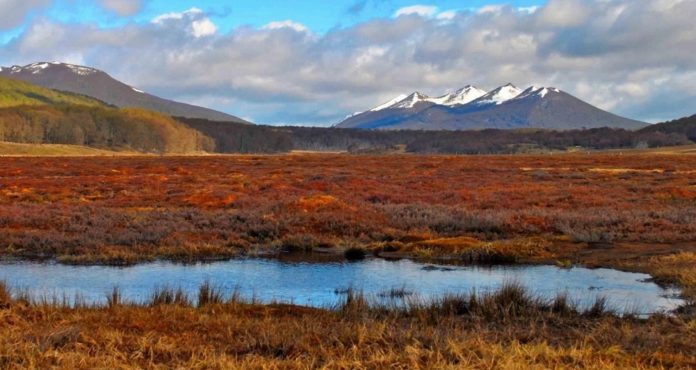Chile is renowned for its diverse ecosystem, from the vast mountain ranges of Patagonia to the southernmost tip of Tierra del Fuego. The country is also home to a less famous carbon storage powerhouse—peatlands.
Every year, International Bog Day is marked on 26 July to highlight the importance of peatlands. On 28 July this year, the Chilean Government, the United Nations Environment Programme (UNEP) and Global Peatlands Initiative (GPI) partners joined together online to celebrate these unique ecosystems, which are increasingly becoming known for their potential as a nature-based solution.
The Global Peatlands Initiative is an effort by leading experts and institutions, including UNEP, to save peatlands as the world’s largest terrestrial organic carbon stock and to prevent it being emitted into the atmosphere.
“Chile is shifting the needle on climate action as they are prioritizing nature-based solutions for their Climate Action commitments. UNEP is bringing partners together to exchange best practices and to bring science to policymakers through the Global Peatlands Initiative,” said UNEP peatlands expert Dianna Kopansky.
Around three percent of Chile’s surface is covered by peatlands, representing more than 2.3 million hectares and storing approximately 4.8 gigatonnes of carbon, which has been accumulating for over 18,000 years. This is almost five times more carbon than is stored in the aboveground biomass of all of Chile’s forests combined. Two million hectares of peatlands lie in Chile’s southernmost Magallanes region. The average depth of the peat bogs here is 5.5 metres, with some of them going down 12 meters. However, the total area of peatlands across the country, including under native forests, as well as peatlands in the Aysén region, has not yet been calculated.
Tierra del Fuego, shared by Argentina and Chile, possesses the most southerly concentration of peatlands in the world, bringing together groups of species that do not exist in any other place. In fact, it hosts 95 per cent of Argentina’s peatlands. On Chile’s side of Tierra del Fuego, peatlands cover 90,000 hectares, mostly blanketed by precious carbon-capturing sphagnum moss.
The main threats and impacts on peatland conservation in Tierra del Fuego are:
- Drainage for «land-clearance» for agricultural, forestry and livestock production (fires)
- Removing peat and mosses to use as a substrate (horticulture)
- Illegal extraction of peat and mosses
- The hydrological impact of invasive species like beavers (peatland drainage)
Peat in Chile is currently classified as a fossil resource under the country’s Mining Code, compromising its carbon sequestration capacity and shifting peatlands from net carbon sinks into net carbon sources. There is a lack of knowledge about the importance of peatlands across all sectors in Chile. Despite this, a bill on environmental protection of peatlands is being considered by the Chilean parliament.

Ambitious plans
The Government of Chile is planning a national inventory of peatlands in 2020-2021 and aims to include peatlands in its national greenhouse gas emissions inventory. In 2019, Chilean and international scientists called for peatlands to be included in the country’s Nationally Determined Contributions. Chile included peatlands in its Nationally Determined Contributions for 2020 and is developing a Chilean Peatland Strategy (supported by the Wildlife Conservation Society) that will contribute to its progress on multiple Multilateral Environmental Agreements.
“We are working to foster best practices through supporting South-South and triangular collaboration, reinforcing the collaboration between Scotland and Chile, connecting Chile with Peru and Argentina, and planning the WildforLife peatlands journey in Tierra del Fuego,” said Kopansky.
UNEP is also implementing a project funded by the Global Environment Facility (GEF), Mainstreaming Conservation of Coastal Wetlands of Chile’s south-central Biodiversity Hotspot through Adaptive Management of Coastal Area Ecosystems.
“While the south-central region of Chile contains an as yet unknown amount of peatland, we’re working with GPI to strengthen the UNEP/GEF project,” says project coordinator Jose Dallo.
For more information, please contact Dianna Kopansky: dianna.kopansky@un.org
Related articles:

